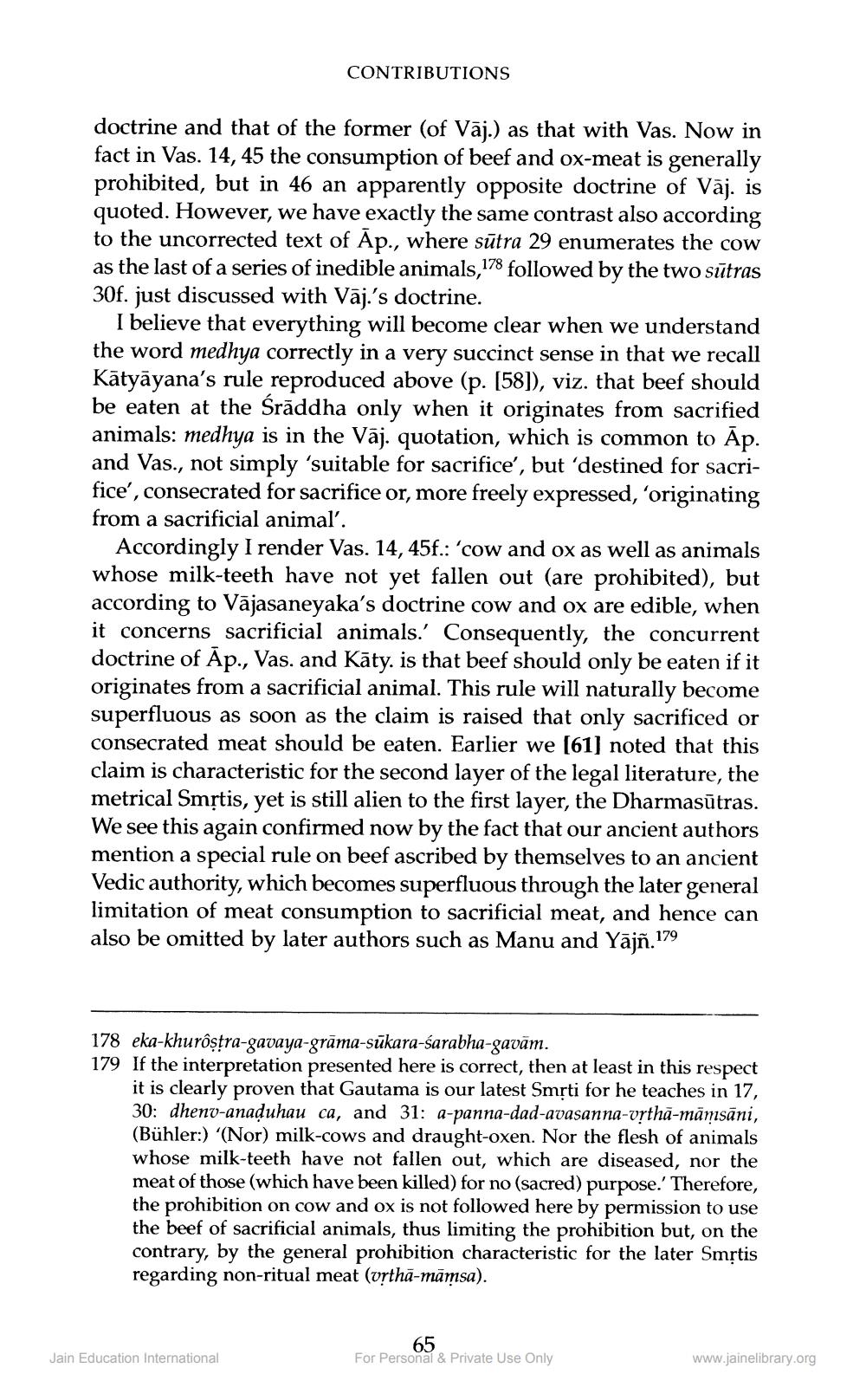________________
CONTRIBUTIONS
doctrine and that of the former (of Vāj.) as that with Vas. Now in fact in Vas. 14, 45 the consumption of beef and ox-meat is generally prohibited, but in 46 an apparently opposite doctrine of Vāj. is quoted. However, we have exactly the same contrast also according to the uncorrected text of Ap., where sūtra 29 enumerates the cow as the last of a series of inedible animals,178 followed by the two sūtras 30f. just discussed with Vāj.'s doctrine.
I believe that everything will become clear when we understand the word medhya correctly in a very succinct sense in that we recall Kātyāyana's rule reproduced above (p. [58]), viz. that beef should be eaten at the Śrāddha only when it originates from sacrified animals: medhya is in the Vāj. quotation, which is common to Āp. and Vas., not simply 'suitable for sacrifice', but 'destined for sacrifice', consecrated for sacrifice or, more freely expressed, 'originating from a sacrificial animal'.
Accordingly I render Vas. 14, 45f.: 'cow and ox as well as animals whose milk-teeth have not yet fallen out (are prohibited), but according to Vājasaneyaka's doctrine cow and ox are edible, when it concerns sacrificial animals. Consequently, the concurrent doctrine of Ap., Vas. and Kāty. is that beef should only be eaten if it originates from a sacrificial animal. This rule will naturally become superfluous as soon as the claim is raised that only sacrificed or consecrated meat should be eaten. Earlier we [61] noted that this claim is characteristic for the second layer of the legal literature, the metrical Smộtis, yet is still alien to the first layer, the Dharmasūtras. We see this again confirmed now by the fact that our ancient authors mention a special rule on beef ascribed by themselves to an ancient Vedic authority, which becomes superfluous through the later general limitation of meat consumption to sacrificial meat, and hence can also be omitted by later authors such as Manu and Yājñ.179
178 eka-khurôstra-gavaya-grāma-sūkara-sarabha-gavām. 179 If the interpretation presented here is correct, then at least in this respect
it is clearly proven that Gautama is our latest Smrti for he teaches in 17, 30: dhenv-anaduhau ca, and 31: a-panna-dad-avasanna-vrthā-māmsāni, (Bühler:) '(Nor) milk-cows and draught-oxen. Nor the flesh of animals whose milk-teeth have not fallen out, which are diseased, nor the meat of those (which have been killed) for no (sacred) purpose. Therefore, the prohibition on cow and ox is not followed here by permission to use the beef of sacrificial animals, thus limiting the prohibition but, on the contrary, by the general prohibition characteristic for the later Smrtis regarding non-ritual meat (vrthā-māmsa).
65
Jain Education International
For Personal & Private Use Only
www.jainelibrary.org




